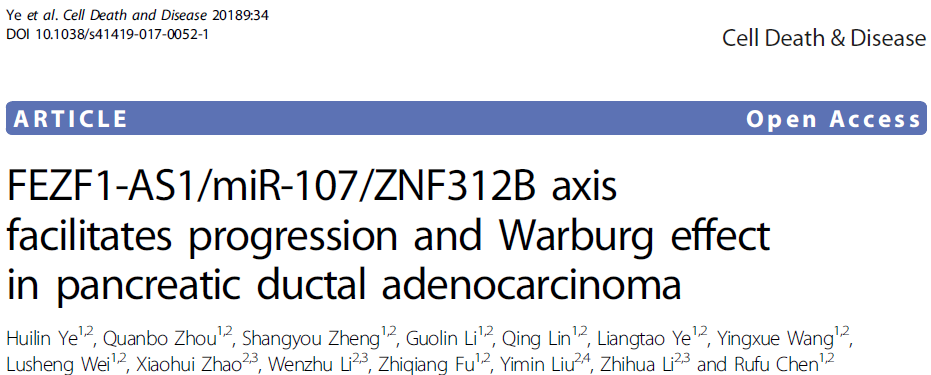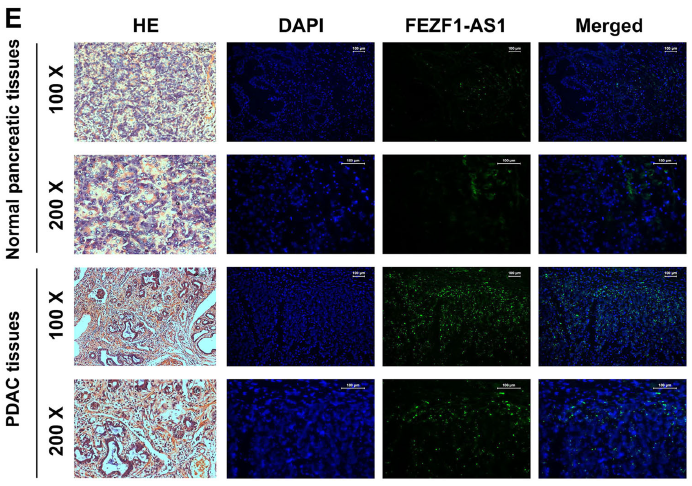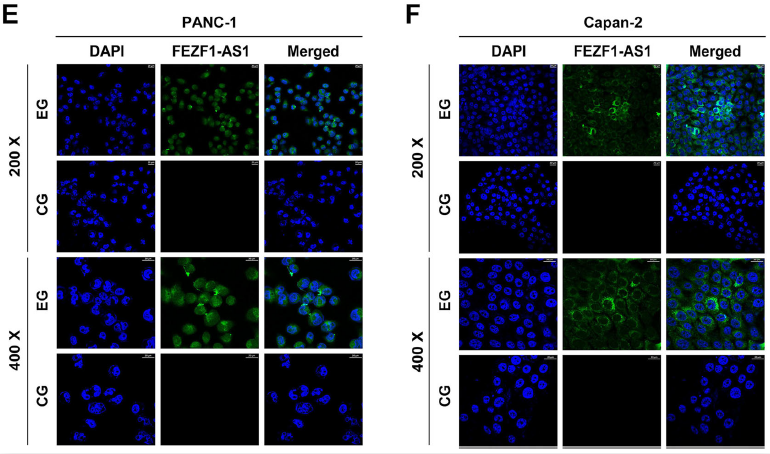
摘要
Long non-coding RNAs (lncRNAs) play a pivotal role in pathological processes. However, little information has been published regarding the underlying functions and mechanisms of lncRNAs in pancreatic ductal adenocarcinoma (PDAC). A novel lncRNA FEZF1-AS1 and its sense-cognate gene ZNF312B were found to be highly expressed in human PDAC tissues and cell lines, which is associated with disease progression and predicts clinical outcome in PDAC patients. Of note, bioinformatics analysis, luciferase assays and RNA immunoprecipitation assays indicated that FEZF1-AS1 may act as an endogenous sponge by competing for miR-107, thereby modulating the derepression of ZNF312B.
Downregulation of FEZF1-AS1 or ZNF312B significantly inhibited proliferation, colony formation, migration, and invasion of PDAC cells in vitro, whereas the miR-107 inhibitor abrogated the effect of dow-regulation of FEZF1-AS1 or ZNF312B in reducing oncogenic capacities of PDAC cells. In addition, FEZF1-AS1/miR-107/ZNF312B axis-induced promotion of PDAC cells proliferation appeared to be mediated by modulation of the apoptosis and the G1-S checkpoint. Furthermore, downregulation of FEZF1-AS1 repressed tumor growth in mouse xenograft models. In particular, our results highlight the contribution of FEZF1-AS1/miR-107/ZNF312B axis to Warburg effect maintenance of PDAC cells. Collectively, our findings demonstrate that the FEZF1-AS1/miR-107/ZNF312B axis regulatory network might provide a potential new therapeutic strategy for PDAC.
Keywords:FEZF1-AS1, ZNF312B, miR-107, pancreatic ductal adenocarcinoma
合作部分结果


伯信合作技术
lncRNA FISH探针
原文链接
https://doi.org/10.1038/s41419-017-0052-1




